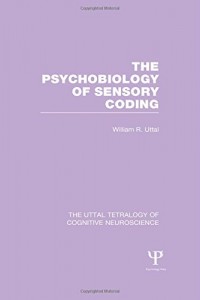-60%
Pediatric Stroke Rehabilitation: A Holistic and Multifaceted Approach
Setting the Stage: Understanding the Scope of Pediatric Stroke
Pediatric Stroke Rehabilitation: An Interprofessional and Collaborative Approach emerges as a transformative text, illuminating the intricacies of stroke management in children. Its holistic perspective encompasses the interdisciplinary nature of this complex field, recognizing the critical roles played by various healthcare providers in optimizing outcomes.
Evidence-Based Foundations: Guiding Principles for Recovery
Evidence-based practices serve as the bedrock of this text, emphasizing the paramount importance of recovery over compensation. Goal achievement and outcome measurement become central tenets, guiding clinicians towards personalized and effective interventions for each child.
Interdisciplinary Collaboration: A Synergy of Expertise
The text boasts a diverse array of contributions from renowned healthcare professionals, including respected figures such as Drs. Heather Atkinson, Kim Nixon-Cave, and Sabrina E. Smith. Their collective wisdom provides a comprehensive overview of pediatric stroke, empowering readers with the necessary tools for successful treatment.
Delving into the Medical Landscape: Types of Strokes Deciphered
The initial section meticulously examines the medical fundamentals of pediatric stroke, meticulously describing the various types encountered in this population. This foundational knowledge equips readers with an in-depth understanding of the underlying pathophysiology and its implications for rehabilitation.
The Core of Rehabilitation: Unlocking Recovery’s Potential
The subsequent section delves into the heart of the matter—rehabilitation. It explores the intricate rehabilitation journey, emphasizing the critical role of goal setting, individualized interventions, and outcome assessments. This comprehensive approach empowers healthcare providers with the necessary knowledge and skills to maximize recovery potential.
Extending Recovery Beyond the Clinic: Embracing the Family, Community, and School
Recognizing the profound impact of stroke on the child’s environment, the text dedicates a section to the broader context of recovery. It explores the importance of family support, community engagement, and school integration in fostering optimal outcomes for the child.
Unique Insights: Personal Vignettes and Family Perspectives
Personal vignettes from family members of stroke-affected children offer invaluable insights into the emotional and practical challenges faced by these families. They provide a poignant narrative that deepens understanding of the profound impact of stroke on both the child and their loved ones.
Family Focus Box: Empowering Caregivers as Advocates
Thoughtful family focus boxes distill the key takeaways from each chapter, arming caregivers with the knowledge and tools to effectively advocate for their child’s needs. This practical guidance empowers families to navigate the complexities of stroke care and support their child’s recovery journey.
Case Studies: Contextualizing the Rehabilitation Process
Real-world case studies provide tangible examples of the principles discussed throughout the text. They illustrate the complexities of stroke rehabilitation, highlighting the diverse needs of children and the collaborative efforts of healthcare providers to achieve optimal outcomes.
International Classification of Functioning, Disability, and Health (ICF): A Universal Framework
The text incorporates the World Health Organization’s International Classification of Functioning, Disability, and Health (ICF) framework, providing a standardized language for describing the impact of stroke on a child’s daily life. This common vocabulary facilitates effective communication among healthcare providers and enhances collaborative decision-making.
Classroom Resources for Educators: Enhancing Instruction
Instructors in educational settings can access additional materials tailored for classroom use by visiting www.efacultylounge.com. These resources amplify the text’s content, supporting educators in conveying the complexities of pediatric stroke rehabilitation to their students.
Target Audience: A Resource for Healthcare Professionals and Beyond
Pediatric Stroke Rehabilitation: An Interprofessional and Collaborative Approach serves as an invaluable resource for students and practicing clinicians in the field. It is particularly relevant for physical therapists, occupational therapists, speech-language pathologists, physicians, neuropsychologists, nurses, and educators who dedicate their work to supporting children affected by stroke.
Conclusion: A Catalyst for Comprehensive and Effective Stroke Management
In summary, Pediatric Stroke Rehabilitation: An Interprofessional and Collaborative Approach stands as a groundbreaking text that advances the understanding and practice of pediatric stroke management. Its interdisciplinary perspective, evidence-based approach, and holistic coverage empower healthcare providers with the tools and knowledge to deliver comprehensive and effective interventions for children affected by stroke.
maybe you like these too:
- How to Succeed at Interprofessional Education (Original PDF from Publisher)
- Partnering for Recovery in Mental Health: A Practical Guide to Person-Centered Planning
- Wong’s Essentials of Pediatric Nursing, 9e (Original PDF from Publisher)
- Pediatric Critical Care, An Issue of Critical Care Clinics (The Clinics: Internal Medicine) (Original PDF from Publisher)









Reviews
Clear filtersThere are no reviews yet.